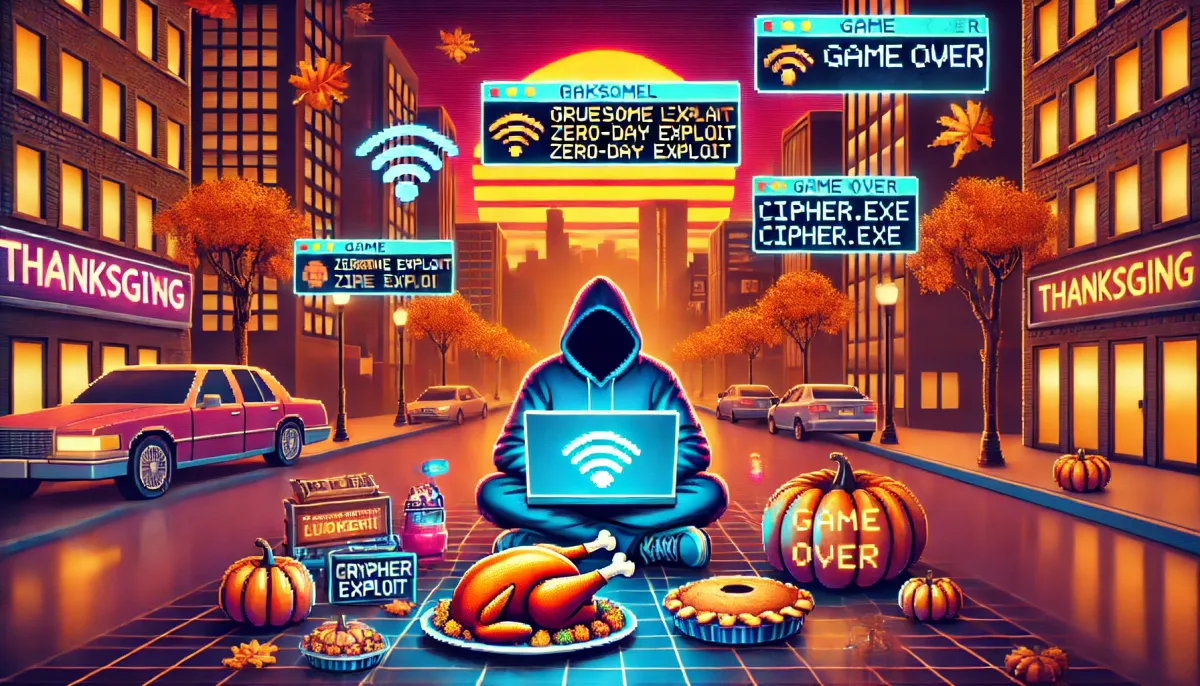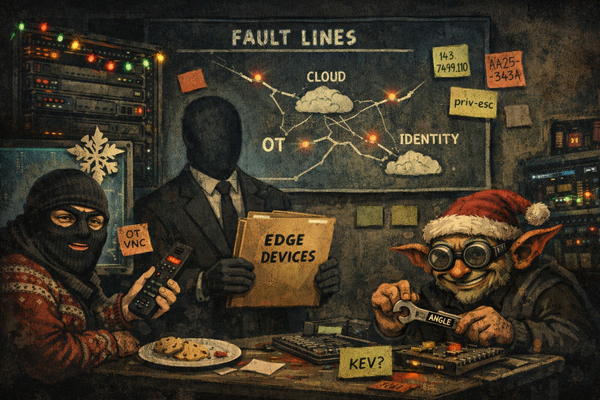GruesomeLarch: Unveiling the Sophisticated Cyber-Espionage Tactics of a Russian Nation-State Actor
The threat actor known as "GruesomeLarch," also publicly recognized as Fancy Bear (APT28), has been identified as a sophisticated Russian nation-state group involved in cyber-espionage activities.

TL;DR
- Nearest Neighbor Attack: GruesomeLarch's novel attack technique leverages Wi-Fi networks in close proximity to the target, allowing them to breach multiple organizations and gain access to high-value targets.
- Living-off-the-land Techniques: The group predominantly uses legitimate tools and protocols to evade detection, minimizing the use of custom malware.
- Zero-day Exploitation: GruesomeLarch has employed zero-day vulnerabilities, such as CVE-2022-38028, to escalate privileges and gain deeper access to networks.
- Targeting Ukrainian-related Entities: The group's activities have focused on organizations with expertise on Ukraine, particularly around the time of the Russian invasion.
- Sophisticated Lateral Movement: GruesomeLarch demonstrates advanced capabilities in lateral movement within compromised networks, often using dual-homed systems to bridge Wi-Fi and Ethernet connections.
- Use of Cipher.exe for Anti-forensics: The group has been observed using the Cipher.exe utility to securely delete their tools and cover their tracks.
- Credential-based Access: GruesomeLarch relies heavily on brute-forcing and password-spraying to obtain valid credentials for accessing target networks.
Research Summary
The threat actor known as "GruesomeLarch," also publicly recognized as Fancy Bear (APT28), has been identified as a sophisticated Russian nation-state group involved in cyber-espionage activities. Recently, GruesomeLarch has been linked to a novel attack technique dubbed the "Nearest Neighbor Attack," which leverages Wi-Fi networks in close proximity to the intended target. This method allows the threat actor to breach multiple organizations by daisy-chaining Wi-Fi and VPN connections, ultimately gaining access to high-value targets. The group's activities have primarily targeted organizations with expertise on Ukraine, particularly around the time of the Russian invasion of Ukraine.
GruesomeLarch's tactics, techniques, and procedures (TTPs) are characterized by their use of living-off-the-land techniques, which involve leveraging legitimate tools and protocols to evade detection. They have also employed zero-day vulnerabilities, such as CVE-2022-38028, to escalate privileges and gain deeper access to compromised networks. The group's ability to adapt and innovate in their attack methods, as demonstrated by the Nearest Neighbor Attack, highlights their resourcefulness and determination in achieving their espionage objectives.
The historical context of GruesomeLarch reveals a pattern of targeting geopolitical adversaries and entities of strategic interest to Russia. Their operations have been meticulously planned and executed, often involving multiple stages of compromise and lateral movement within networks. The group's recent activities, including the Nearest Neighbor Attack, underscore their continued focus on high-value targets and their ability to operate covertly over extended periods.
Comparing GruesomeLarch to other similar threat actors, such as Fancy Bear (APT28) and Forest Blizzard, reveals commonalities in their motivations and methods. These groups share a focus on cyber-espionage, targeting government, military, and critical infrastructure sectors. However, GruesomeLarch's innovative use of Wi-Fi networks and living-off-the-land techniques sets them apart, demonstrating their unique approach to achieving their objectives.
In conclusion, GruesomeLarch represents a significant threat to organizations with strategic importance, particularly those related to geopolitical conflicts. Their advanced TTPs and ability to evade detection make them a formidable adversary. Organizations must implement robust security measures, including multi-factor authentication (MFA) for Wi-Fi networks and continuous monitoring for anomalous activities, to mitigate the risks posed by this threat actor.
Assessment Rating
Rating: HIGH
The assessment rating is high due to the sophisticated and innovative attack techniques employed by GruesomeLarch, their focus on high-value geopolitical targets, and their ability to evade detection through living-off-the-land methods. The potential impact on critical infrastructure and national security further elevates the threat level.
Attribution
Historical Context
GruesomeLarch, also known as Fancy Bear (APT28), is a Russian nation-state group involved in cyber-espionage activities. They have a history of targeting geopolitical adversaries and entities of strategic interest to Russia, particularly those related to Ukraine.
Timeline
- February 2022: GruesomeLarch's Nearest Neighbor Attack targets organizations with expertise on Ukraine.
- April 2024: Microsoft publishes research on Forest Blizzard, linking it to GruesomeLarch and detailing the use of the GooseEgg tool.
- November 2024: Volexity publishes information on "Nearest Neighbor Attack"
Origin
GruesomeLarch is attributed to Russia, with activities aligned with the strategic interests of the Russian government.
Countries Targeted
- Ukraine: Primary target, particularly organizations with expertise on Ukraine.
- United States: Secondary target, focusing on entities with strategic importance.
- European Union: Targeted for geopolitical intelligence.
- NATO Member States: Targeted for military and defense-related information.
- Other Geopolitical Adversaries: Targeted for strategic intelligence.
Sectors Targeted
- Government: High-value geopolitical intelligence.
- Military: Defense-related information.
- Critical Infrastructure: Strategic importance.
- Technology: Advanced research and development.
- Energy: Strategic resources and infrastructure.
Motivation
GruesomeLarch is motivated by geopolitical objectives, focusing on cyber-espionage to gather intelligence that supports Russian strategic interests.
Attack Types
- Wi-Fi Network Exploitation: Nearest Neighbor Attack.
- Living-off-the-land Techniques: Use of legitimate tools and protocols.
- Zero-day Exploitation: CVE-2022-38028.
- Credential-based Access: Brute-forcing and password-spraying.
Known Aliases
- Fancy Bear: Widely recognized alias.
- APT28: Commonly used in cybersecurity reports.
- Forest Blizzard: Used by Microsoft.
- Sofacy: Another alias used in threat intelligence.
- GruesomeLarch: Specific to recent activities.
Links to Other APT Groups
- Fancy Bear (APT28): Directly linked, sharing the same origin and objectives.
- Forest Blizzard: Linked through the use of the GooseEgg tool and similar TTPs.
Similar Threat Actor Groups
- Cozy Bear (APT29): Similar focus on cyber-espionage and geopolitical targets.
Counter Strategies
- Implement MFA for Wi-Fi Networks: Enhance security by requiring multi-factor authentication for Wi-Fi access.
- Actionable Takeaways: Reduce the risk of unauthorized access through compromised credentials.
- Monitor for Anomalous Use of Tools: Detect and alert on the use of tools like netsh and Cipher.exe.
- Actionable Takeaways: Identify and respond to potential intrusions more effectively.
Known Victims
- Organization A: Targeted for expertise on Ukraine.
- Actionable Takeaways: Implement robust Wi-Fi security measures and continuous monitoring.
- Organization B: Compromised to facilitate the Nearest Neighbor Attack.
- Actionable Takeaways: Strengthen network segmentation and access controls.
Recommendations, Actions, Suggested Pivots, Forecasts and Next Steps..
(Subscribers Only)


![[DEEP RESEARCH] Zero-Days Are a Distraction: 2025’s Biggest Losses Were Stolen Tokens + OAuth](/content/images/size/w600/2025/12/zz-3.png)


